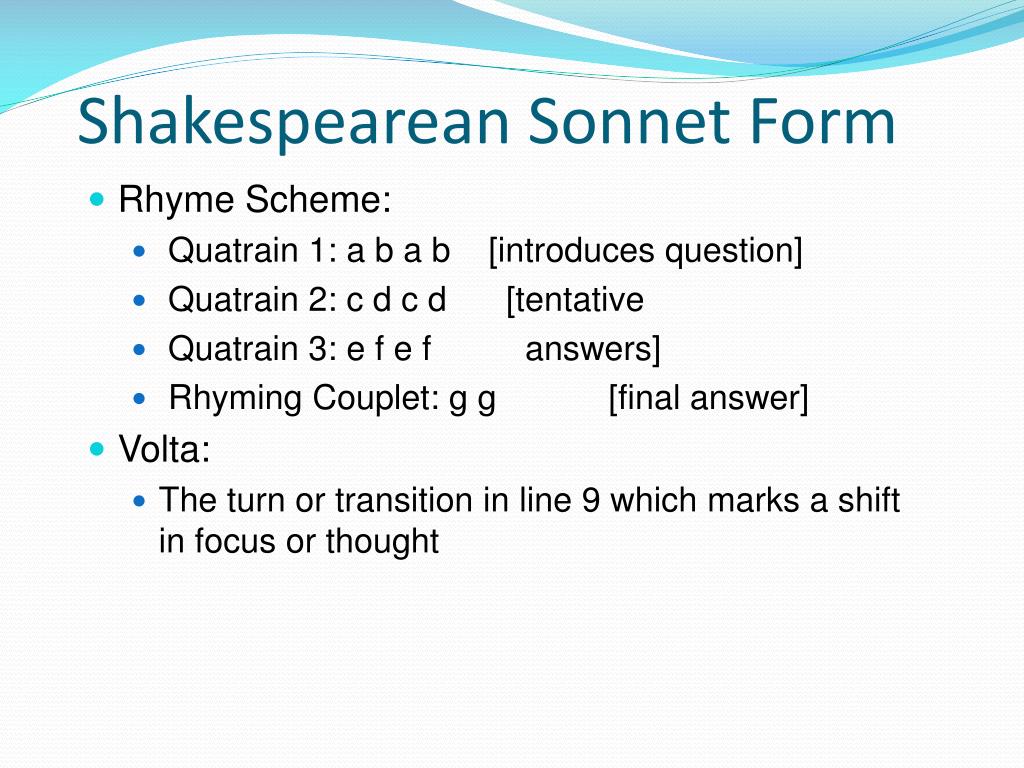

The two most common variations are known as the Petrarchan sonnet and the Shakespearean sonnet. It is in the rhyme structure that many sonnets vary. This pattern continues for fourteen lines, wherein the end words of each line also rhyme according to a particular schema. The line “Shall I com pare thee to a summer’s day”, for example, stresses every second syllable, for a total of ten syllables. Each line of a sonnet is written in iambic pentameter, a meter made up of five sets of unstressed-stressed syllable blocks, called iambs. We have also produced the video on a central formal device of the sonnet, oxymoron, that explains the term and offers more examples of sonnets and their themes.A sonnet is a 14-line poem containing a specific meter and rhyme scheme. Writing Prompt: What aspects of the poem's content make it an appropriate fit for the sonnet form? What aspects of the poem might make it less appropriate for that form? What ironic message do you think the poem conveys through its contrast between the speaker's vision of the dancer and the other "youths" in the poem" Especially if the poem has fourteen lines, look a little closer, even if it isn’t about love: poets have continued to use this form to explore a range of subjects, including war, religion, and the value of poetry itself.Ĭlaude McKay's sonnet " The Harlem Dancer" presents an interesting and complex tension between the sonnet form and content of the poem.

It may not always be obvious that you’re reading a sonnet. In this poem, line 9 introduces a complication signaled by the word “But,” and it also brings in a new rhyme with the word “fade.” Sonnets typically have a “turn”, a place where the argument AND the rhyme scheme change.

When you read a sonnet, it’s important to think about what the poet is saying but also how. Conference for Antiracist Teaching, Language and Assessment.Fall 2023 Undergraduate Course Descriptions.Master of Arts in Interdisciplinary Studies (MAIS).Scientific, Technical, and Professional Communication Certificate.


 0 kommentar(er)
0 kommentar(er)
